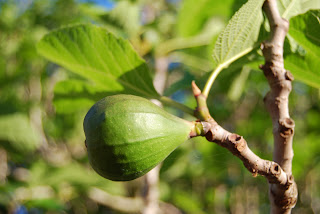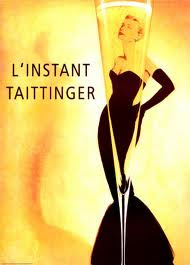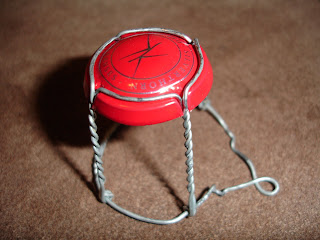Spring is truly a fantastic season! There is nothing quite like the incredible burst of psychedelic neon green to announce the rebirth of life. It was this very phenomena that the ancient Celts attributed to the power of the pagan deity 'The Green Man' or spirit of the forest.
For wine farmers spring is the starting point of the new vintage and with it comes all the usual vineyard practices. For the past two weeks we have been suckering the vines. It is an extremely calming and therapeutic task but vital for the efficient production of top notch fruit.
For wine farmers spring is the starting point of the new vintage and with it comes all the usual vineyard practices. For the past two weeks we have been suckering the vines. It is an extremely calming and therapeutic task but vital for the efficient production of top notch fruit.
The objective is simple and can be illustrated by the before and after photographs of a Chardonnay vine on shale soils:
1) Clear the vine's stem of any shoots by breaking them off by hand.
2) Thin out the arms by removing any shoots without grapes or which are not positioned on the spurs.
3) The result is that growth energy is focused only where it is needed and it also thins the canopy which increases aeration and helps prevent fungal diseases.
 The best part about suckering the vines is that it gives one the opportunity to observe nature up close. Budding, blossoms, bees and fruit... everywhere and a lot of it. It might be to early to call but I have a sneaky suspicion we are in for a bumper crop (touch wood - we still have to wait for fruit set)
The best part about suckering the vines is that it gives one the opportunity to observe nature up close. Budding, blossoms, bees and fruit... everywhere and a lot of it. It might be to early to call but I have a sneaky suspicion we are in for a bumper crop (touch wood - we still have to wait for fruit set) I have never seen as many olive blossoms since we planted our trees 7 years ago. Last season we cured enough olives to feed a small Italian village for at least a year and I think this season is going to be a major challenge. No wonder the clone we planted is called 'mission' because when it comes to picking, curing and bottling 40 olive trees worth of fruit - IT'S A MISSI ON. We would love to sell or give away fresh olives with the upcoming harvest - please mail us if you would like any.
ON. We would love to sell or give away fresh olives with the upcoming harvest - please mail us if you would like any.
 ON. We would love to sell or give away fresh olives with the upcoming harvest - please mail us if you would like any.
ON. We would love to sell or give away fresh olives with the upcoming harvest - please mail us if you would like any. There is also a heavy fig and almond crop. We never bet the figs to actually ripen properly - perhaps we should preserve them when they are small, hard and green (difficult to find the time) I love almonds! Karen goes to extraordinary lenghts to make the most delicious marzipan. Its so good we have actually planted another 8 almond trees.















